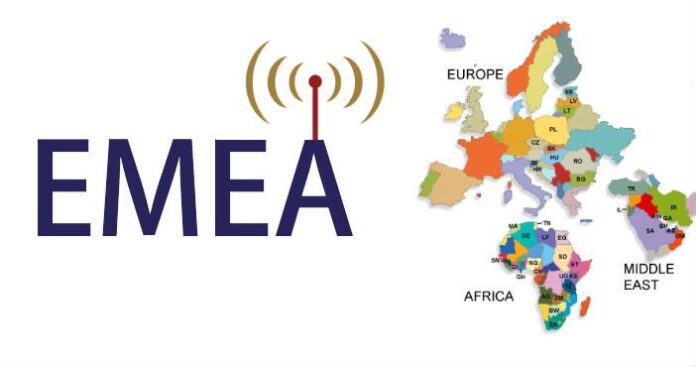The Internet of Things (IoT) or the Internet of Everything, if you prefer, needs involvement from the mobile operators in order for this vision to become a success. Although many are playing in the machine-to-machine (M2M) space, does this really take us down a road to making IoT a reality or not? Hopefully it does.
 Earlier this week Accenture Interactive released a study conducted by Acquity Group on the State of the Internet of Things. One of the interesting findings regarding barriers to adoption of in-home IoT was not only lack of awareness of these offers, but also perceived lack of value and price/privacy concerns as depicted in the associated chart. As you can see there is still quite a bit of market education and awareness work that needs to take place here. The entire report can be downloaded here.
Earlier this week Accenture Interactive released a study conducted by Acquity Group on the State of the Internet of Things. One of the interesting findings regarding barriers to adoption of in-home IoT was not only lack of awareness of these offers, but also perceived lack of value and price/privacy concerns as depicted in the associated chart. As you can see there is still quite a bit of market education and awareness work that needs to take place here. The entire report can be downloaded here.
Just to get people thinking about ‘what could be,’ below are some examples of IoT innovation for your consideration when thinking about what all of the ‘things’ are that could be networked.
1) Google Glass in Government — government agencies in the United Kingdom are looking to use IoT to find new ways of bringing government and community services to those in need of them remotely and digitally. There are start-up efforts coming online to research these possibilities such as LocalGovDigital.
2) Google Glass in Security — in Dubai the police force is using Google Glass to take photos of traffic violators and quickly identify stolen vehicles through the computer interface.
3) Google Glass in Business — Ideal Properties Group in New York is using Google Glass to train customer service reps. With the customer’s permission, their interaction with an agent is filmed and then sent to the agent’s supervisor in order to provide coaching and development to new trainees.
 4) Drones — think of drones as flying IoT devices. We’re seeing the well-publicized story of Amazon using them for delivery, they are also being used for applications in agriculture management and building inspection. In Italy you can watch the construction progress of Expo 2015 via drones surveying and recording the activities underway. There are hosts of drone conferences available to attend now if you do some looking around the Internet.
4) Drones — think of drones as flying IoT devices. We’re seeing the well-publicized story of Amazon using them for delivery, they are also being used for applications in agriculture management and building inspection. In Italy you can watch the construction progress of Expo 2015 via drones surveying and recording the activities underway. There are hosts of drone conferences available to attend now if you do some looking around the Internet.
5) Travel — AT&T researchers have developed a smart luggage tracker that would help you locate your luggage if it does not arrive at your destination along with you. This solution is an example of the operator’s push into the IoT space. It would work internationally via 3G, could send you a text message when your luggage arrives and help you identify which bag is yours on the luggage carousel. I’d buy this!
6) Roads — Smart roads, intelligent roads, solar roads, call them what you want. But a recent campaign on Indiegogo which did exceeding well with over $2.2 million in funding support shows how a road can be one of the ‘things’ in this discussion.
Coming back to the Acquity study, let’s summarize with some of their key findings on adoption priorities and timelines in this space:
- Fitness will materialize first with an expected 22% adoption by 2015 and 43% by 2019;
- Smart thermostats are slightly behind fitness with an expected 19% adoption by 2015 and 43% by 2019;
- Connected security systems are projected to have 11% adoption by next year and 35% by 2019;
- Smart clothing and heads-up display devices such as Google Glass will have a longer adoption timeline with only 11% by next year and between 14 and 16% by 2019.
Adoption rates were also heavily influenced by gender and age. For both wearables and in-home IoT, men (53% wearables, 70% in-home) were more likely to make a purchase in the next five years then women (45% wearables, 67% in-home). The age of the buyer also had an impact. Fitness wearables were of most interest to the Generation X set (ages 26 – 35) with 59% planning to adopt. Wearables in general were of highest interest to the Millennials (ages 18-25), but still the overall figure was less then 40%. In-home IoT was of the highest interest to this group with more then half planning to adopt and the Baby Boomers (over 45 years of age) were most interested in smart thermostats.
My belief is for any of these technologies to really take hold in an integrated vs. stand-alone fashion, the mobile operators need to determine how they will play in this space to give the end user an integrated solution that is easy to understand. This will also help to mitigate some of the expressed concerns with adoption in the chart above and also level the playing field of tech knowledge required for the user.

